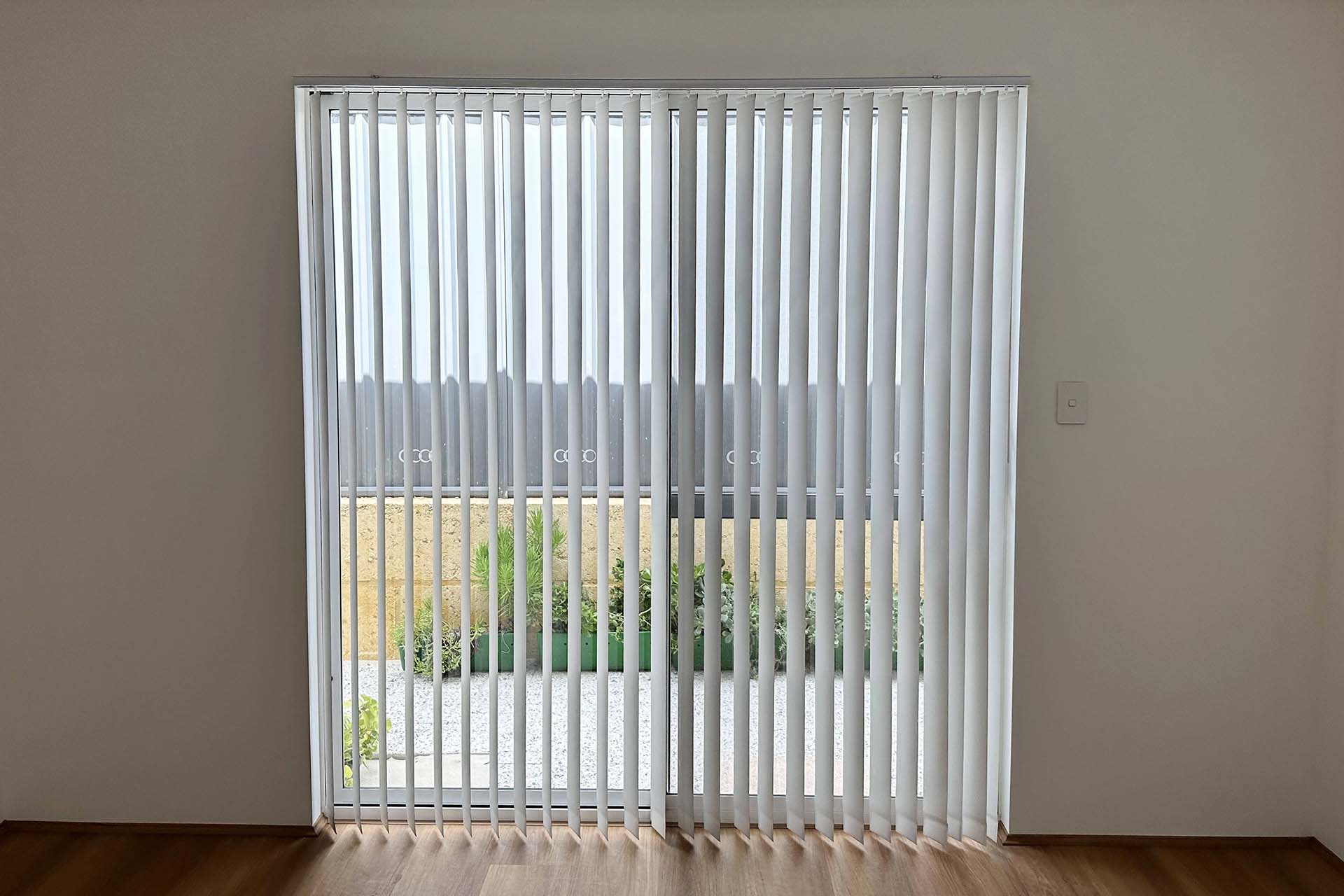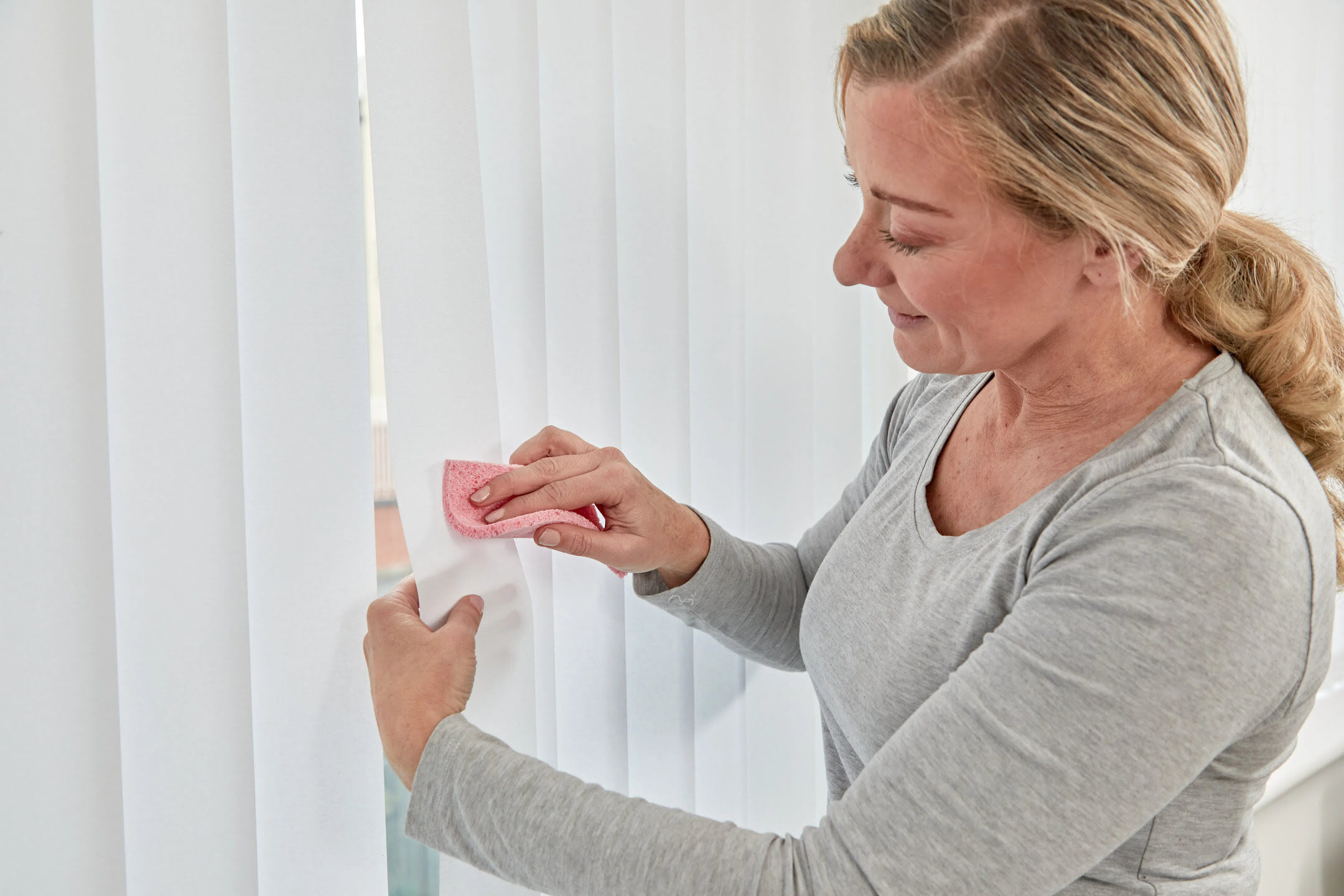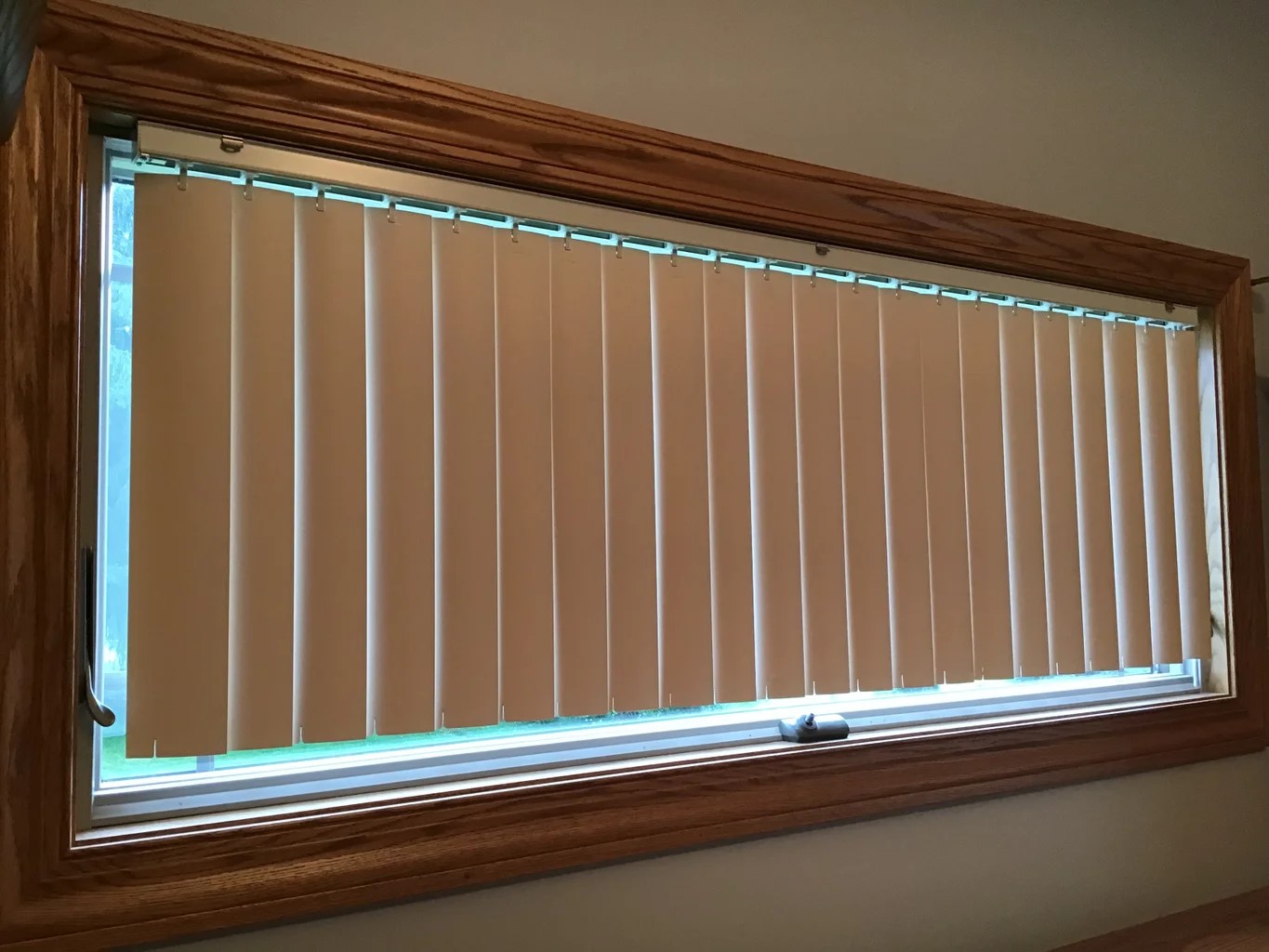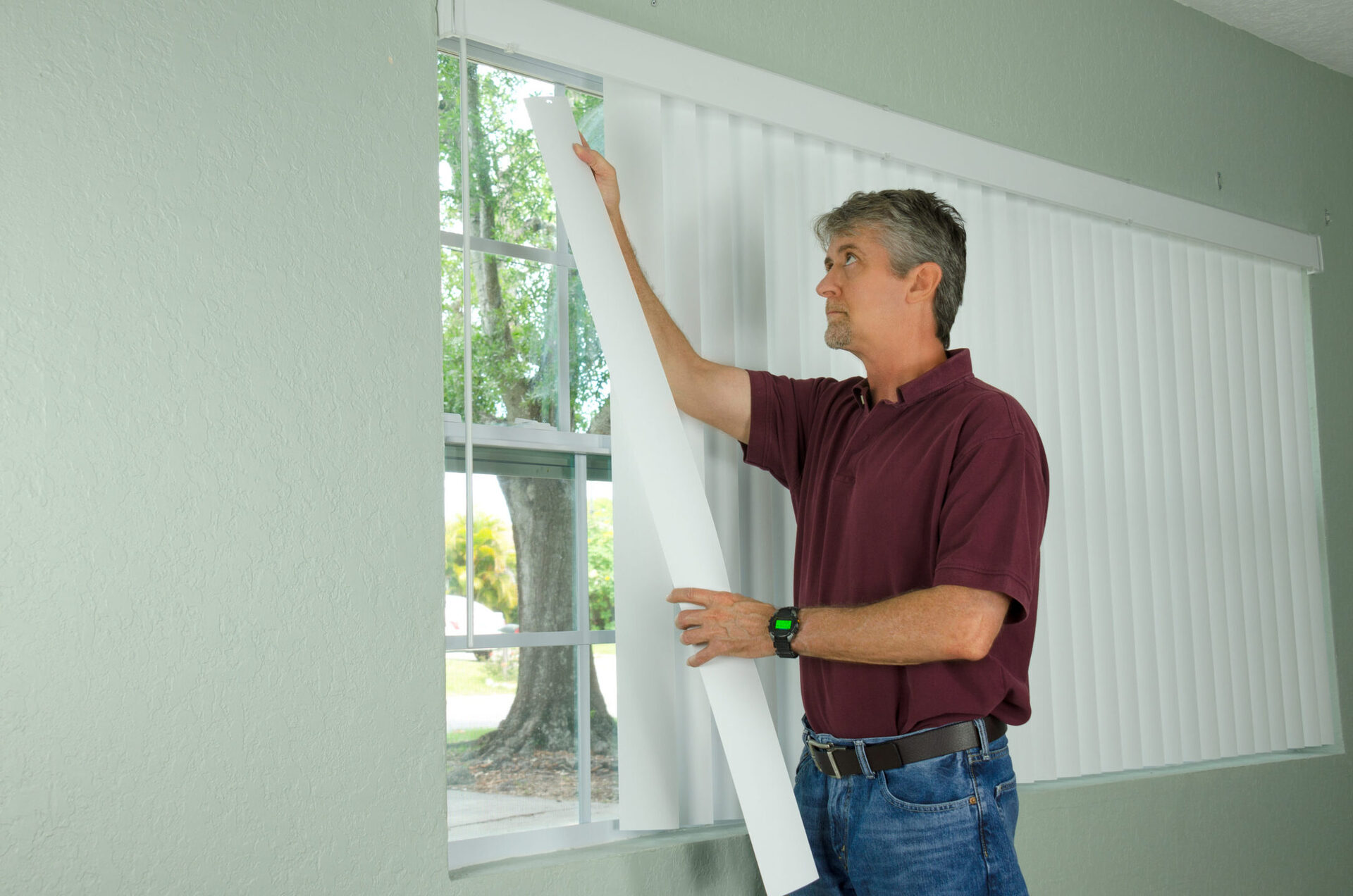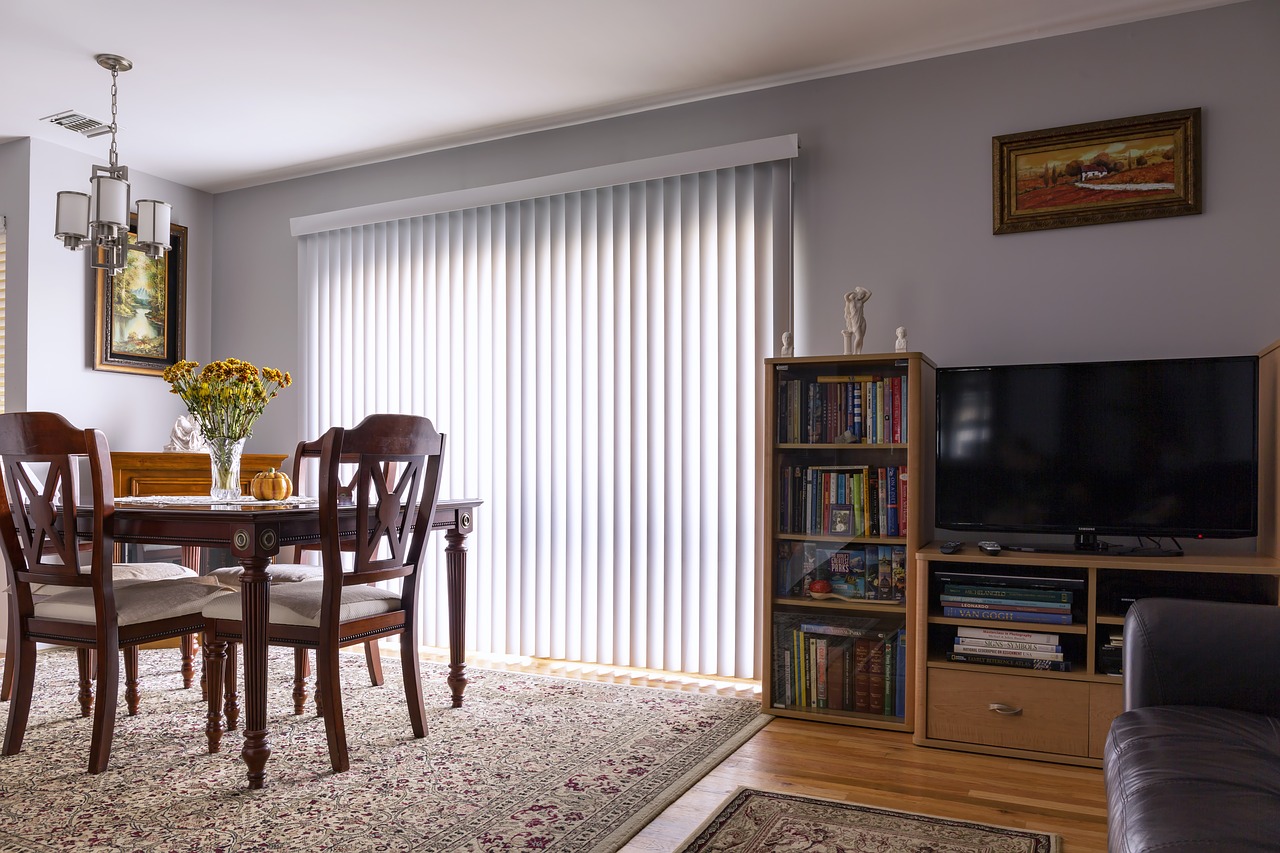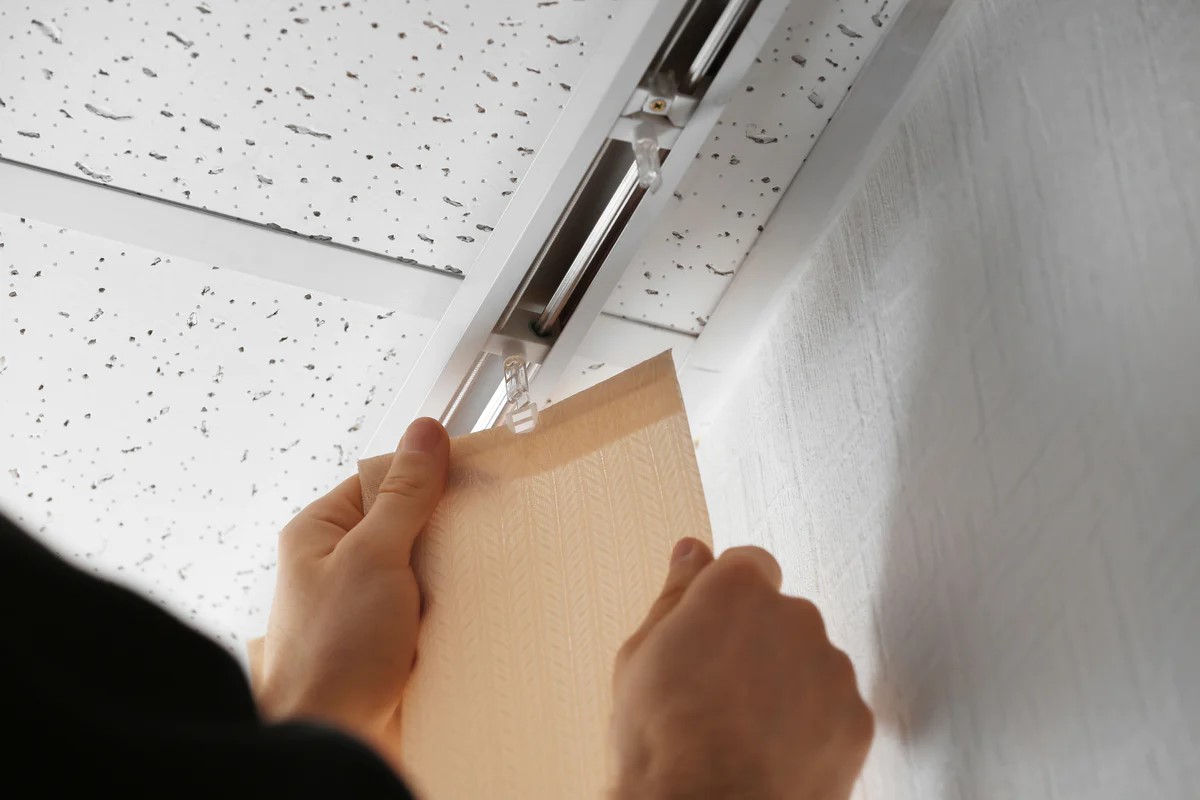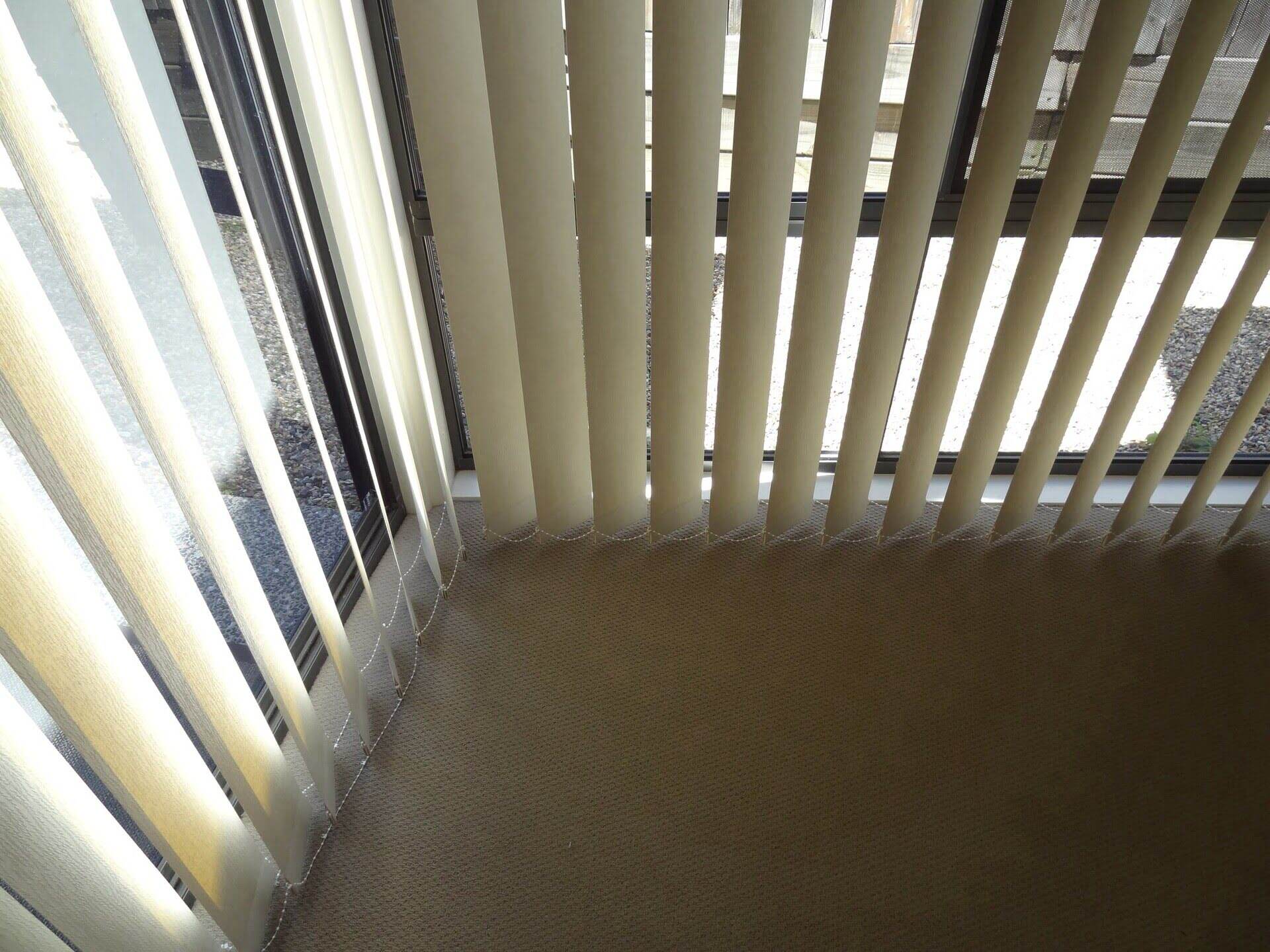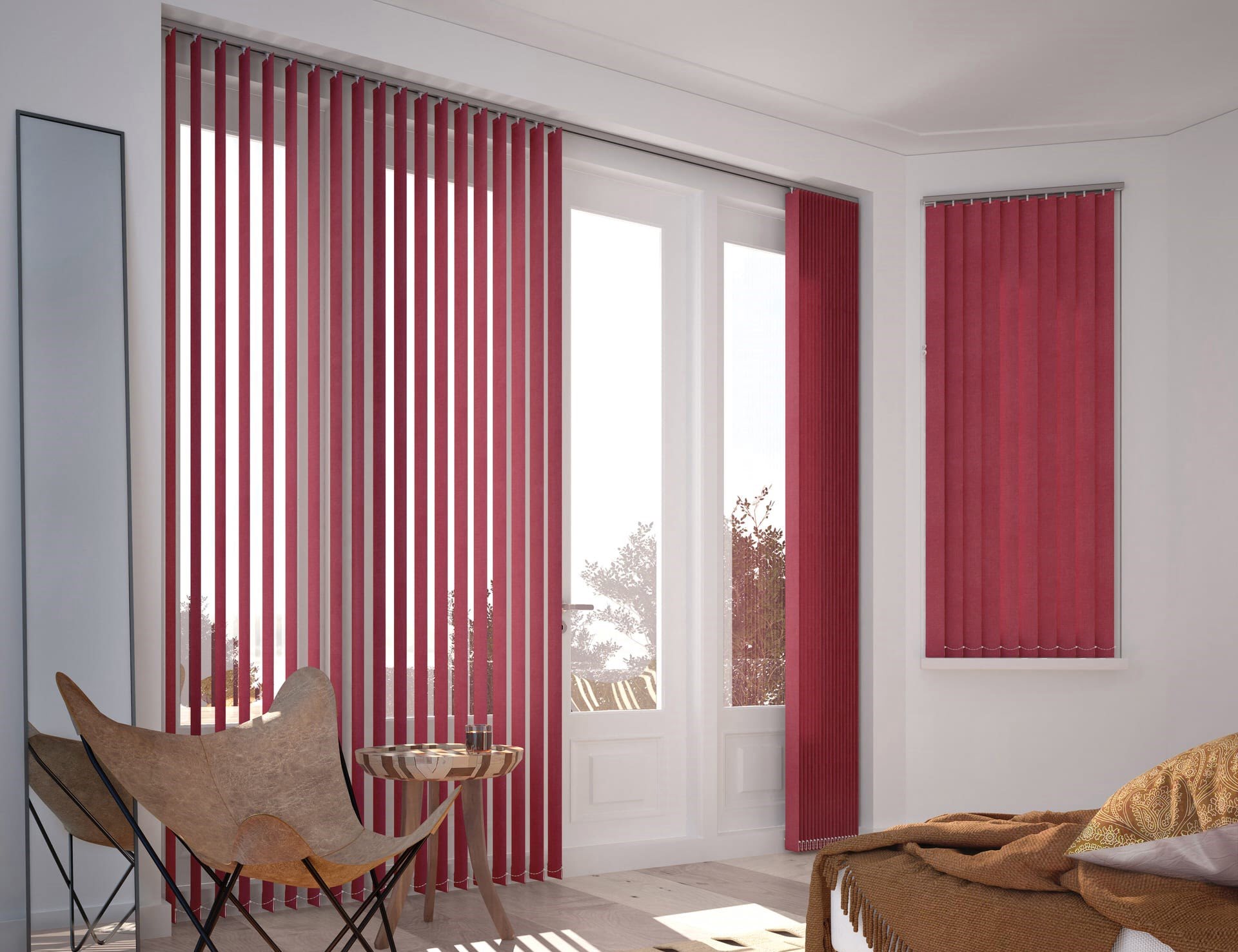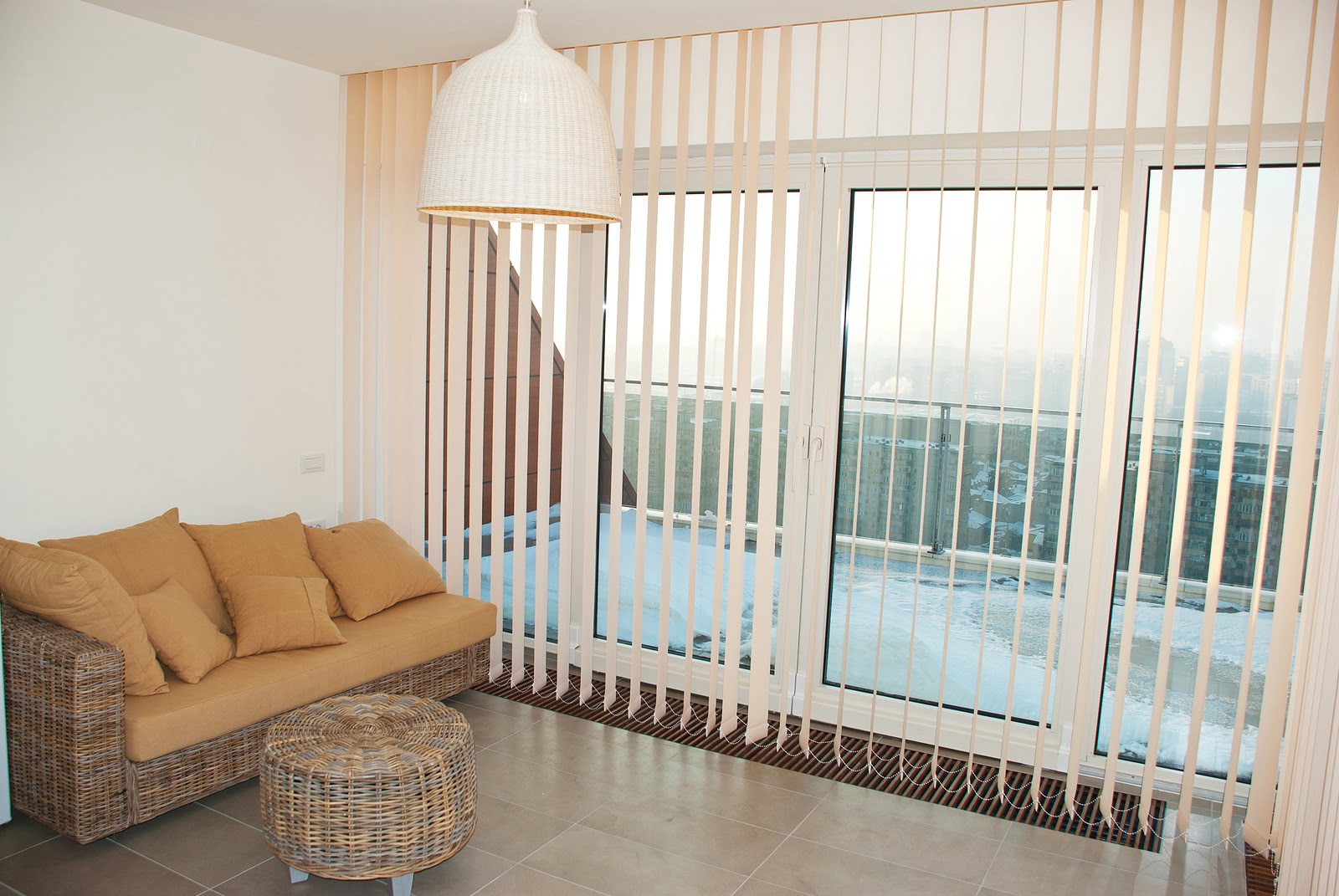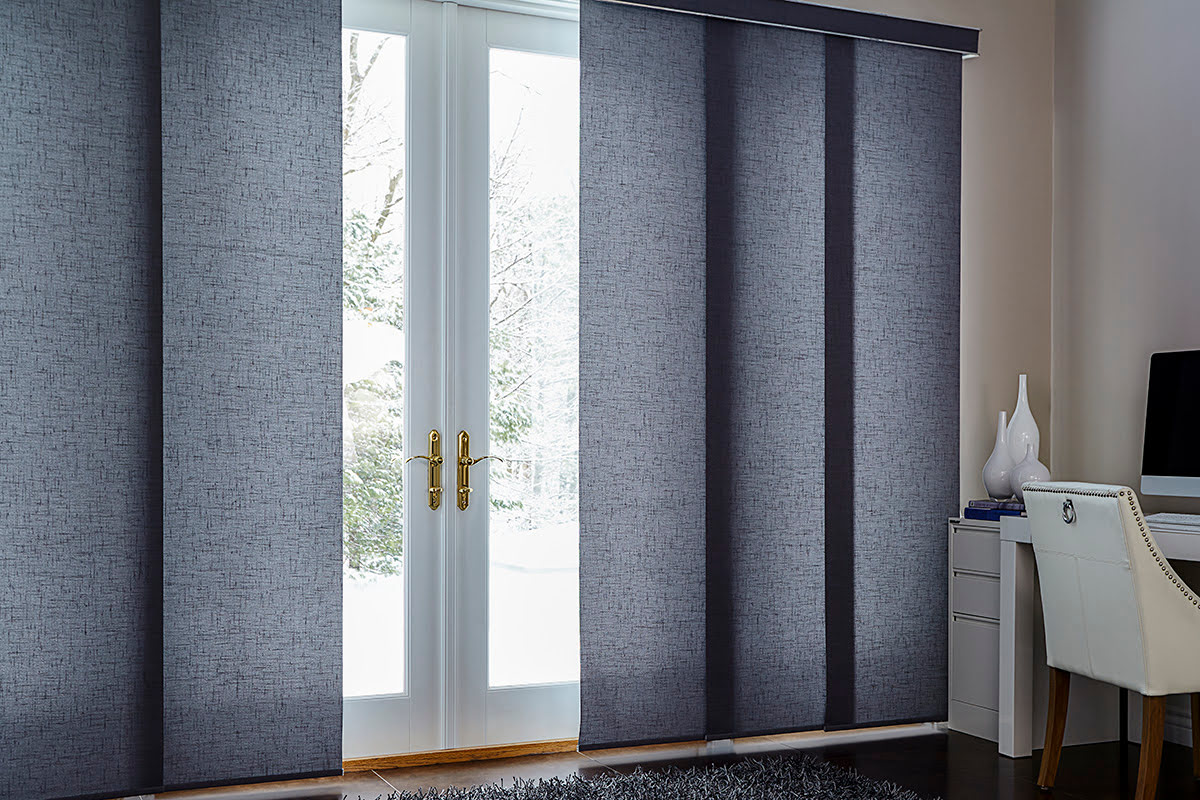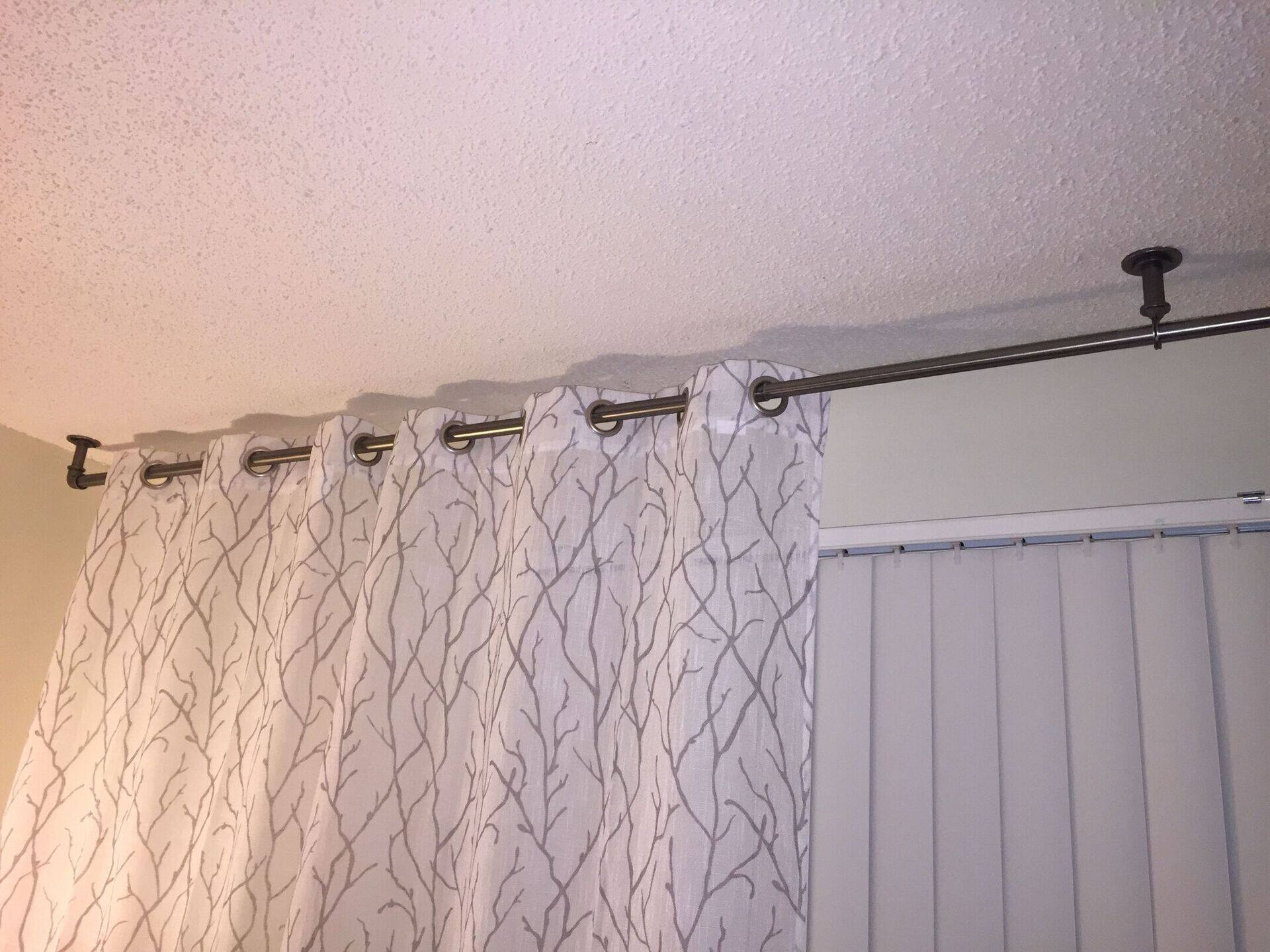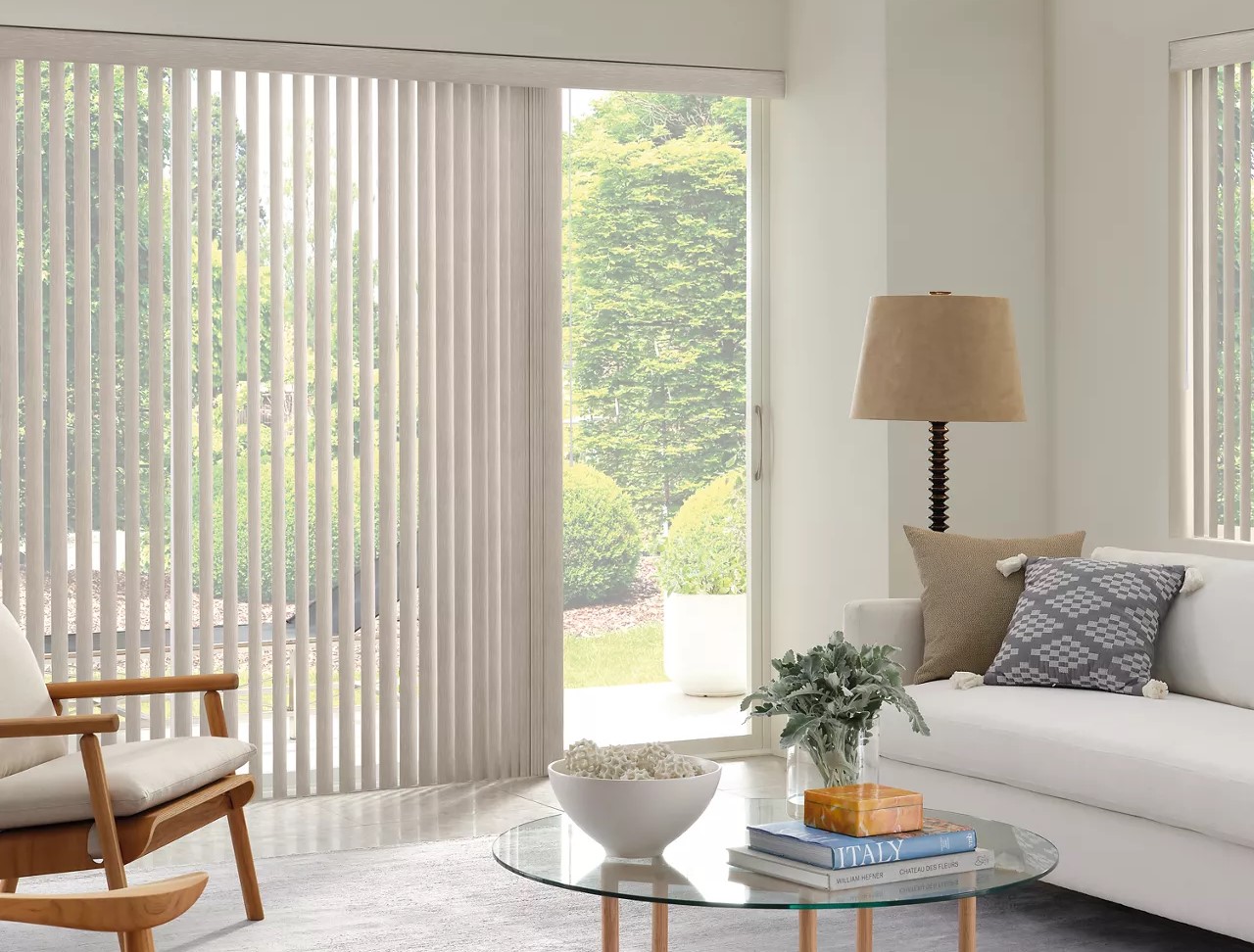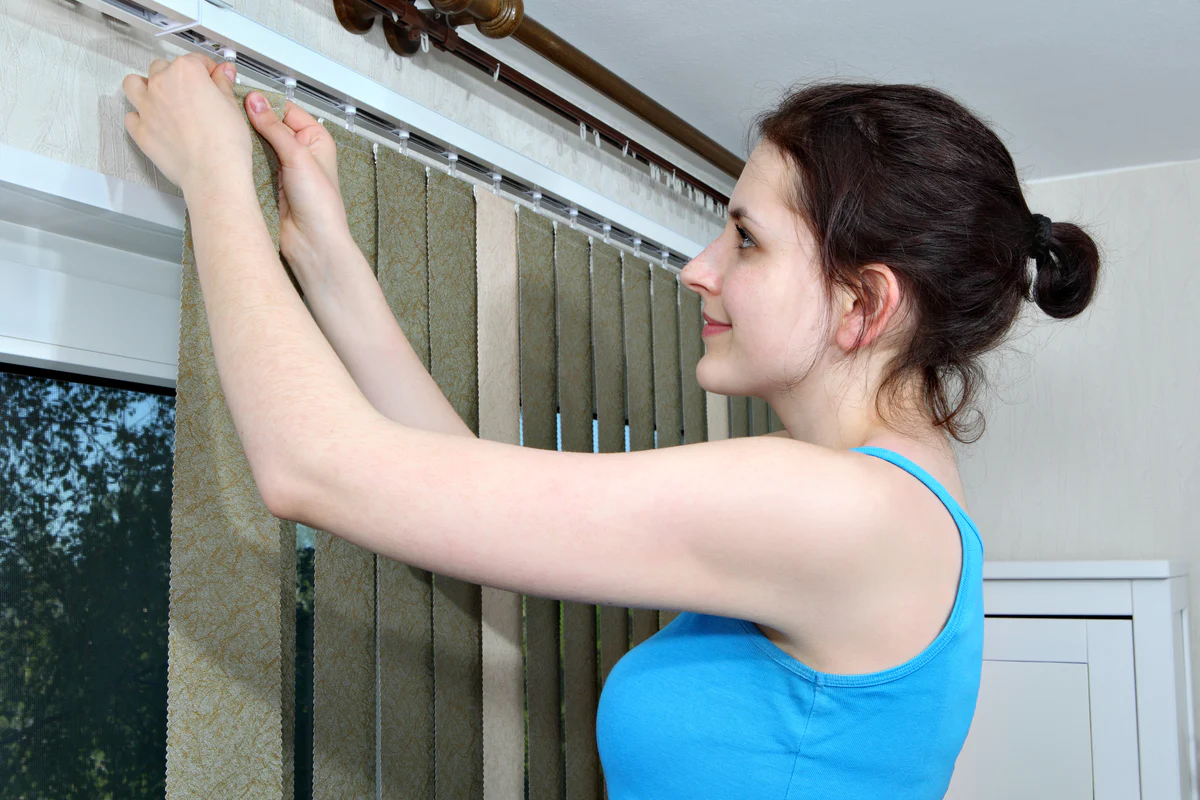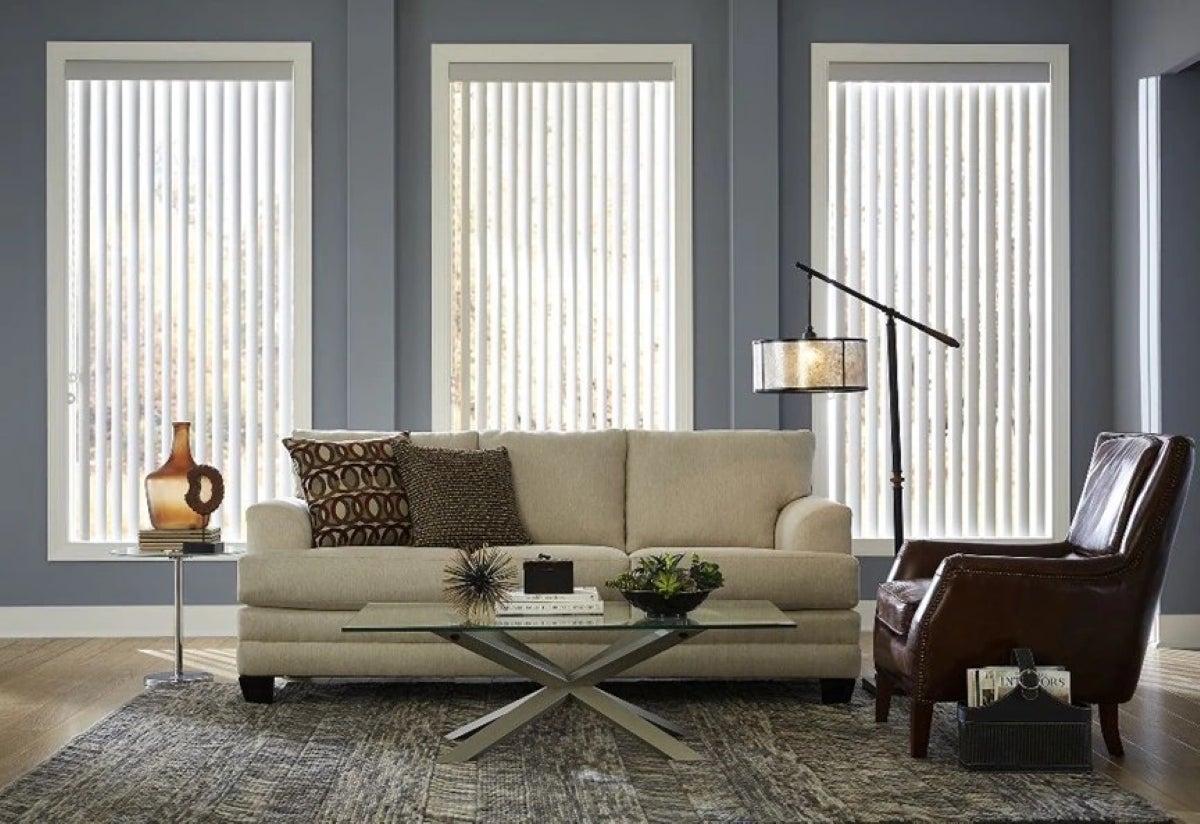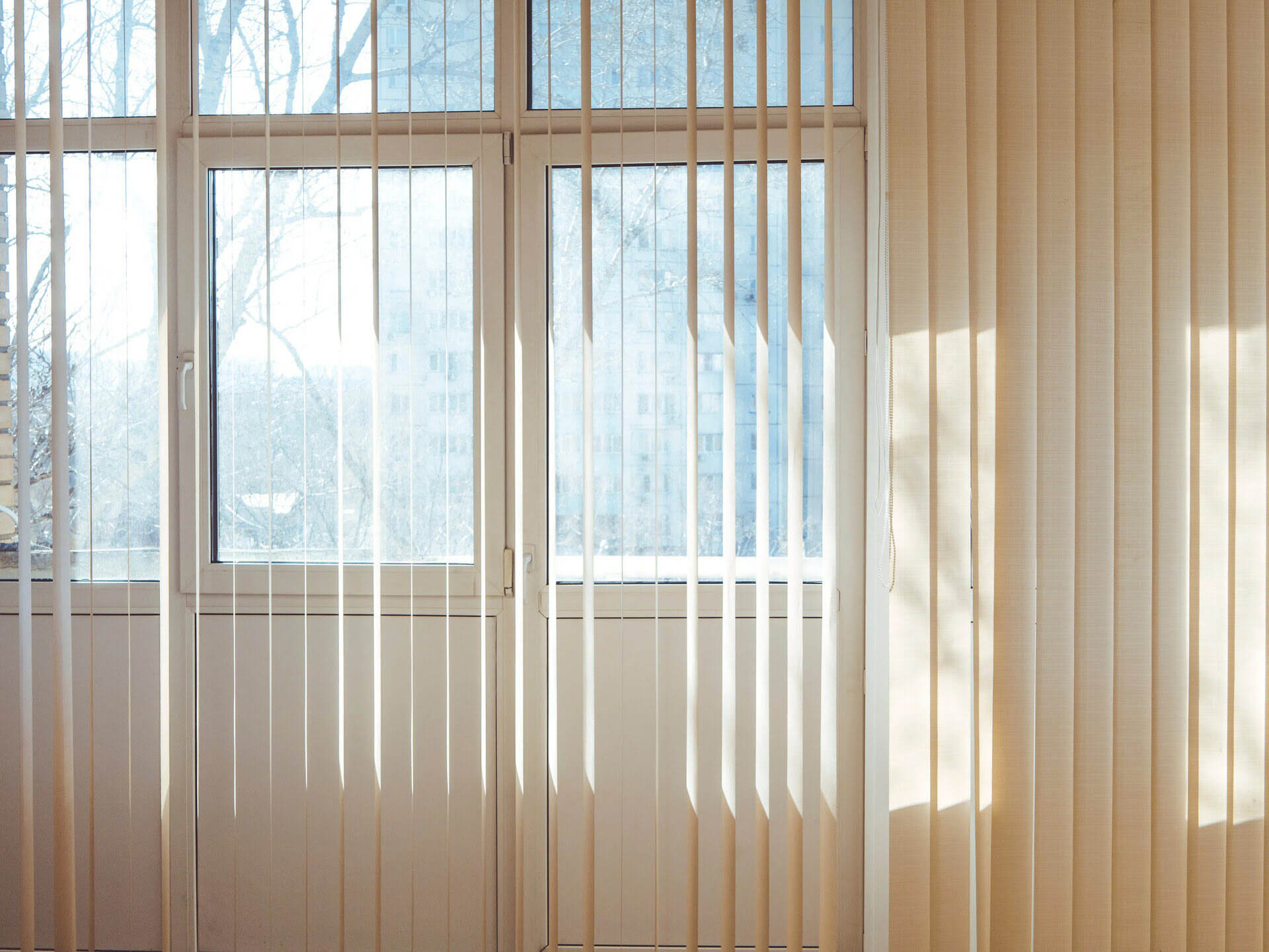

Articles
How Vertical Blinds Work
Modified: January 9, 2024
Learn how vertical blinds work and discover the advantages of these versatile window coverings. Read our articles for expert tips and ideas on choosing and maintaining vertical blinds.
(Many of the links in this article redirect to a specific reviewed product. Your purchase of these products through affiliate links helps to generate commission for Storables.com, at no extra cost. Learn more)
Introduction
Welcome to the world of vertical blinds! These versatile and functional window coverings have been a popular choice for homeowners and businesses alike for decades. With their sleek design and ability to control natural light, vertical blinds offer both practicality and style. In this article, we will explore how vertical blinds work, their components, types, working mechanism, advantages, and maintenance tips. So, let’s dive in and uncover the secrets of these amazing window treatments!
Key Takeaways:
- Vertical blinds are a versatile and cost-effective window covering option that offers excellent light control, privacy, and durability. With a wide range of styles and materials, they provide a practical and stylish solution for any space.
- Proper maintenance, including regular dusting, spot cleaning, and inspection for damage, is essential to ensure vertical blinds continue to function smoothly and look their best. By following these tips, you can prolong the lifespan of your blinds and keep them in excellent condition.
Read more: What Is Vertical Blinds
What are Vertical Blinds?
Vertical blinds are window coverings that consist of slats or vanes that hang vertically from a track. Unlike traditional horizontal blinds, which have slats that run horizontally, vertical blinds are designed to cover larger windows and sliding glass doors. The slats can be made of various materials, including fabric, vinyl, aluminum, or even wood, depending on the desired style and functionality.
Vertical blinds offer numerous advantages, making them a popular choice for both residential and commercial spaces. They provide excellent light control, allowing you to adjust the amount of sunlight entering the room. By simply rotating the slats, you can enjoy diffused light or close them completely for privacy.
These window coverings are also known for their versatility. They come in a wide range of colors, patterns, and textures, allowing you to find the perfect match for your interior design. Whether you prefer a modern, minimalist look or a cozy, traditional feel, there is a vertical blind option to suit your taste.
Furthermore, vertical blinds offer practicality, especially for large windows and doors. The vertical orientation of the slats allows for easy operation, as they can be stacked neatly to the side when the blinds are open. This makes them ideal for sliding glass doors, where easy access is crucial.
Lastly, vertical blinds are an affordable window treatment option. Compared to curtains or shades, they are often more cost-effective while still providing excellent functionality and style. This makes them a popular choice for homeowners and businesses looking for a budget-friendly yet versatile window covering.
Now that we have a basic understanding of what vertical blinds are, let’s take a closer look at their components and how they work.
Components of Vertical Blinds
Vertical blinds consist of several key components that work together to provide the functionality and aesthetic appeal that they are known for. Understanding these components will give you insight into how vertical blinds operate. Let’s explore the main components:
- Slats or Vanes: The slats or vanes are the individual vertical pieces that hang from the track. They can be made of various materials, including fabric, vinyl, aluminum, or wood. The slats are typically connected at the bottom by a chain or cord.
- Track or Rail: The track or rail is the mechanism that supports and guides the slats. It is usually made of durable materials like aluminum or PVC. The slats are attached to carriers, which glide along the track, allowing for easy opening and closing.
- Headrail: The headrail is located at the top of the blinds and houses the track. It provides stability and support for the entire blind system. The headrail may also include a valance, which is a decorative covering that conceals the track.
- Control Mechanism: Vertical blinds offer different control options to operate them. The most common control mechanisms include a chain or cord that allows you to rotate the slats and a separate cord or wand that controls the opening and closing of the blinds.
- Bottom Chain or Weight: At the bottom of the blinds, you will find a chain or weight that ensures the slats hang straight and prevents them from swaying in the breeze. This helps maintain the uniform appearance and functionality of the blinds.
These components work together seamlessly to allow you to control the amount of light and privacy in a room. By manipulating the control mechanism, you can rotate the slats to let in or block out sunlight, as well as open or close the blinds to control privacy levels.
Now that we have a better understanding of the components of vertical blinds, let’s explore the different types of vertical blinds available in the market.
Types of Vertical Blinds
Vertical blinds come in a variety of types, each offering unique features and benefits. Understanding the different types will help you choose the right one for your space. Let’s explore some popular types of vertical blinds:
- Fabric Vertical Blinds: These blinds feature slats made of fabric, providing a softer and more elegant look. They are available in a wide range of colors, patterns, and textures, allowing you to match them with your interior décor. Fabric vertical blinds are an excellent choice for adding warmth and style to any room.
- Vinyl Vertical Blinds: Vinyl vertical blinds are durable and easy to clean, making them ideal for high-traffic areas such as offices or homes with children and pets. They are moisture-resistant and can withstand humid environments, making them suitable for bathrooms and kitchens.
- Aluminum Vertical Blinds: If you’re looking for a sleek and modern option, aluminum vertical blinds are a great choice. They offer a clean and minimalist look, perfect for contemporary interiors. Aluminum blinds are lightweight, corrosion-resistant, and available in a variety of finishes, including brushed, matte, or metallic.
- Wood Vertical Blinds: For a touch of natural beauty, wood vertical blinds are an excellent choice. They provide warmth and elegance, enhancing any décor style. Wood blinds are typically made from high-quality hardwood such as basswood or cedar, offering durability and timeless appeal.
- PVC Vertical Blinds: PVC vertical blinds are a practical and affordable option. They are moisture-resistant and easy to clean, making them suitable for bathrooms, kitchens, and humid climates. PVC blinds are available in a wide range of colors and textures, allowing you to customize your window coverings.
Each type of vertical blind offers unique characteristics, so it’s important to consider your specific needs and preferences when choosing the right one for your space. Now that we’ve explored the different types of vertical blinds, let’s delve into how these blinds actually work.
When installing vertical blinds, make sure to measure the window accurately to ensure a proper fit. It’s also important to consider the material of the blinds and how it will affect the amount of light and privacy in the room.
Working Mechanism of Vertical Blinds
The working mechanism of vertical blinds is designed to provide easy control over light and privacy. Understanding how they operate will help you make the most of these versatile window coverings. Here’s a breakdown of the working mechanism of vertical blinds:
1. Opening and Closing: To open or close vertical blinds, you can use a control mechanism such as a cord, chain, or wand. By pulling on the control mechanism, the blinds will either stack on one side or split evenly, depending on your preference. This allows you to maximize the amount of natural light in the room or block it out completely.
2. Rotating the Slats: Vertical blinds also provide the ability to rotate the slats. This control mechanism, typically a chain or wand, allows you to adjust the angle of the slats, thereby controlling the amount of light entering the room and ensuring desired levels of privacy. By rotating the slats, you can direct sunlight away from your furniture or towards areas where you want more natural light.
3. Stacking Options: Depending on the design, vertical blinds offer different stacking options. They can be either split-stacked or one-way stacked. With split stacking, the blinds will stack on both sides, creating an equal distribution of the slats. One-way stacking means that the blinds will stack entirely to one side, leaving the other side free from any obstructions.
4. Control Location: The control mechanism of vertical blinds can be positioned either on the left or right side. This allows you to choose the most convenient location for operation, considering factors such as furniture placement or personal preference.
5. Alignment: Proper alignment of the slats is crucial for the smooth operation of vertical blinds. It is essential to ensure that all the slats hang straight and are evenly spaced. Additionally, the bottom chain or weight helps maintain the slats’ alignment by preventing them from swaying in the breeze.
Vertical blinds provide a flexible and user-friendly working mechanism, allowing you to customize the amount of light and privacy in your space. Now that we understand how vertical blinds operate, let’s explore the advantages they offer.
Read more: How To Measure For Vertical Blinds
Advantages of Vertical Blinds
Vertical blinds offer several advantages that make them a popular choice among homeowners and businesses. Let’s take a closer look at the benefits of using vertical blinds as window coverings:
- Light Control: One of the significant advantages of vertical blinds is their ability to control natural light. By rotating the slats, you can easily adjust the amount of sunlight entering the room. This allows you to create a well-lit, comfortable environment or block out excessive sunlight when needed.
- Privacy: Vertical blinds provide excellent privacy control. By closing the slats completely, you can prevent prying eyes from seeing into your space. This feature is particularly beneficial for ground-level windows or windows facing busy streets.
- Versatility: Vertical blinds are highly versatile and can be used in various types of windows, including large windows, sliding glass doors, and even curved windows. Their vertical orientation allows for easy operation and provides a sleek and streamlined look.
- Wide Range of Styles: Whether you prefer a modern, minimalistic look or a more traditional feel, vertical blinds offer a wide range of styles, colors, patterns, and materials to choose from. This allows you to select the perfect design that complements your interior décor.
- Durability: Vertical blinds are designed to be durable and long-lasting. They are made from sturdy materials, such as fabric, vinyl, aluminum, or wood, and are built to withstand daily use and exposure to sunlight. This makes them a practical investment for your home or office.
- Easy to Clean and Maintain: Cleaning vertical blinds is relatively easy. Most materials can be wiped down with a damp cloth or dusted with a vacuum cleaner attachment. Vertical blinds also require minimal maintenance, making them a convenient choice for busy households or commercial spaces.
- Cost-Effective: Compared to other window treatments like curtains or shades, vertical blinds are often more cost-effective. They offer a functional and stylish solution at a budget-friendly price, making them a popular choice for those looking to enhance their windows without breaking the bank.
With their light control, privacy, versatility, and low maintenance, vertical blinds provide numerous advantages for any space. Now, let’s discuss some essential maintenance tips to keep your vertical blinds in excellent condition.
Maintenance Tips for Vertical Blinds
Proper maintenance of your vertical blinds is essential to ensure they continue to function smoothly and look their best. Here are some important maintenance tips to keep your vertical blinds in excellent condition:
- Regular Dusting: Dust accumulation is inevitable, so it’s important to regularly dust your vertical blinds to prevent dirt buildup. You can use a soft cloth, feather duster, or a vacuum cleaner with a brush attachment to gently remove dust from the slats.
- Spot Cleaning: For stains or spills, it’s best to spot clean the affected area immediately. Use a mild detergent or a mixture of water and vinegar to gently clean the spot using a soft cloth or sponge. Avoid using harsh chemicals or abrasive cleaners that can damage the fabric or material.
- Avoid Excessive Force: When opening or closing your vertical blinds, avoid applying excessive force. Pull the control cord, chain, or wand gently to prevent any damage to the mechanism or slats. Being gentle will ensure smooth operation and longevity of your blinds.
- Inspect for Damaged or Worn Components: Regularly inspect your vertical blinds for any damaged or worn components, such as broken slats, bent tracks, or frayed cords. If you notice any issues, it’s best to address them promptly to prevent further damage and ensure the blinds continue to function correctly.
- Adjust the Slats: Over time, the slats of your vertical blinds may become misaligned or uneven. Use the control mechanism to adjust the slats and ensure they hang straight and at an even level. This will enhance the appearance and functionality of your blinds.
- Protect from Sun Damage: Prolonged exposure to direct sunlight can cause fading and damage to the slats of your blinds. Consider using window films or UV-blocking treatments to protect your blinds and reduce the harmful effects of the sun’s rays.
- Professional Cleaning: If your vertical blinds are heavily soiled or require a deep clean, consider hiring a professional blind cleaning service. They have the expertise and specialized equipment to safely and effectively clean your blinds, ensuring they look and operate their best.
- Store Properly: If you need to remove or store your vertical blinds temporarily, make sure to do so carefully. Fold or stack the slats neatly, and store them in a clean and dry area to prevent dust accumulation or damage.
By following these maintenance tips, you can prolong the lifespan of your vertical blinds and keep them looking fresh and functional for years to come. Now that we’ve discussed maintenance, let’s wrap up our exploration of vertical blinds.
Conclusion
Vertical blinds are a practical and stylish window covering option that offers numerous advantages for any space. They provide excellent light control, privacy, and versatility, making them ideal for large windows, sliding glass doors, or curved windows. With a wide range of styles, colors, and materials to choose from, you can easily find vertical blinds that complement your interior décor.
The working mechanism of vertical blinds allows for easy opening, closing, and rotating of the slats, giving you full control over light and privacy levels. Additionally, vertical blinds are durable, easy to clean, and cost-effective compared to other window treatments.
To keep your vertical blinds in excellent condition, regular dusting, spot cleaning, and inspection for any damage or wear are crucial. By following these maintenance tips, you can ensure that your blinds continue to function smoothly and look their best for years to come.
Whether you’re looking to enhance the aesthetics of your home or improve the functionality of your office space, vertical blinds provide an ideal solution. Their timeless appeal, practicality, and affordability make them a popular choice among homeowners and businesses.
So, why wait? Explore the world of vertical blinds and discover the perfect window covering that will enhance the beauty and functionality of your space. Embrace the versatility, enjoy the light control, and revel in the privacy that vertical blinds can offer.
Upgrade your windows with vertical blinds and experience the transformative power they bring to any room. Your windows deserve the best, and vertical blinds are here to deliver both style and functionality.
Frequently Asked Questions about How Vertical Blinds Work
Was this page helpful?
At Storables.com, we guarantee accurate and reliable information. Our content, validated by Expert Board Contributors, is crafted following stringent Editorial Policies. We're committed to providing you with well-researched, expert-backed insights for all your informational needs.
